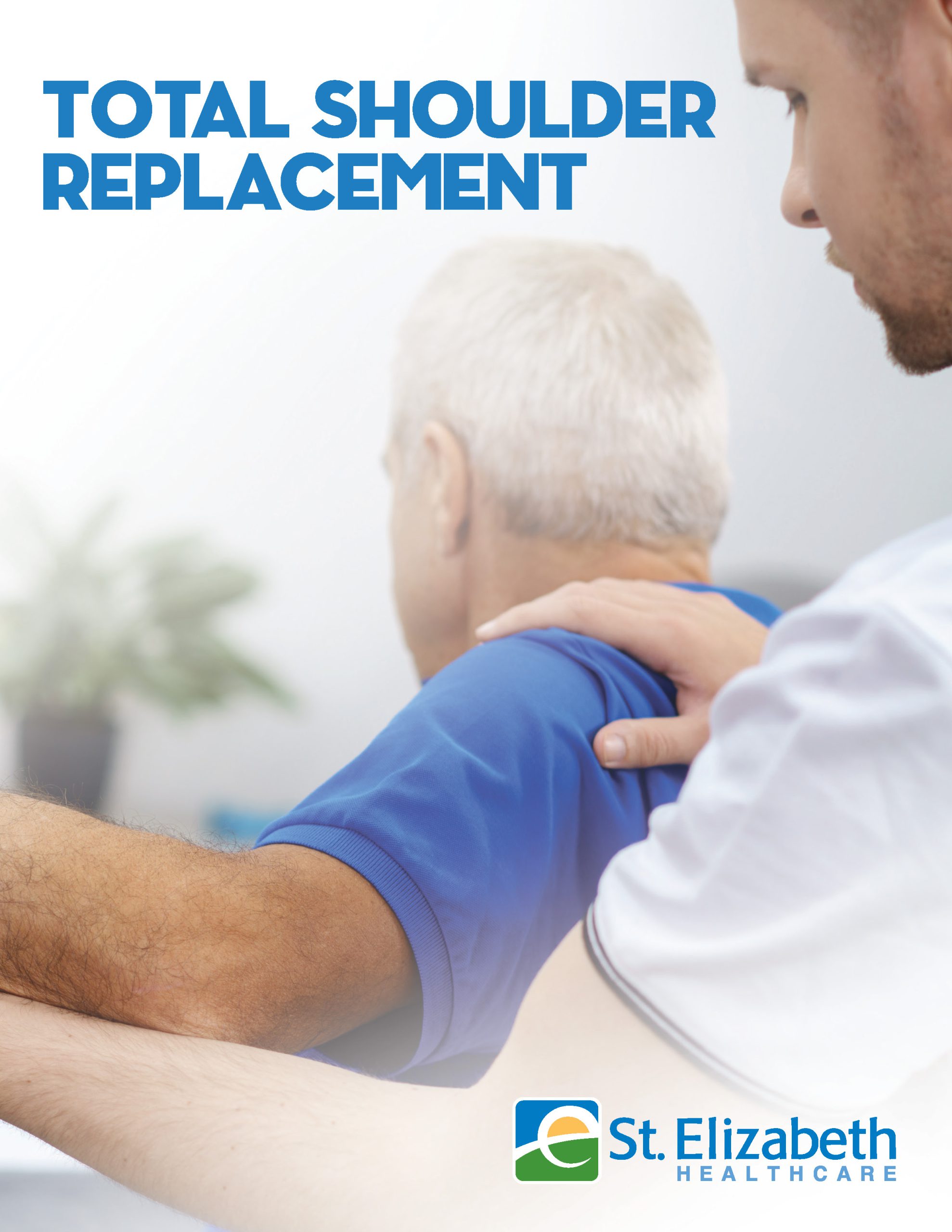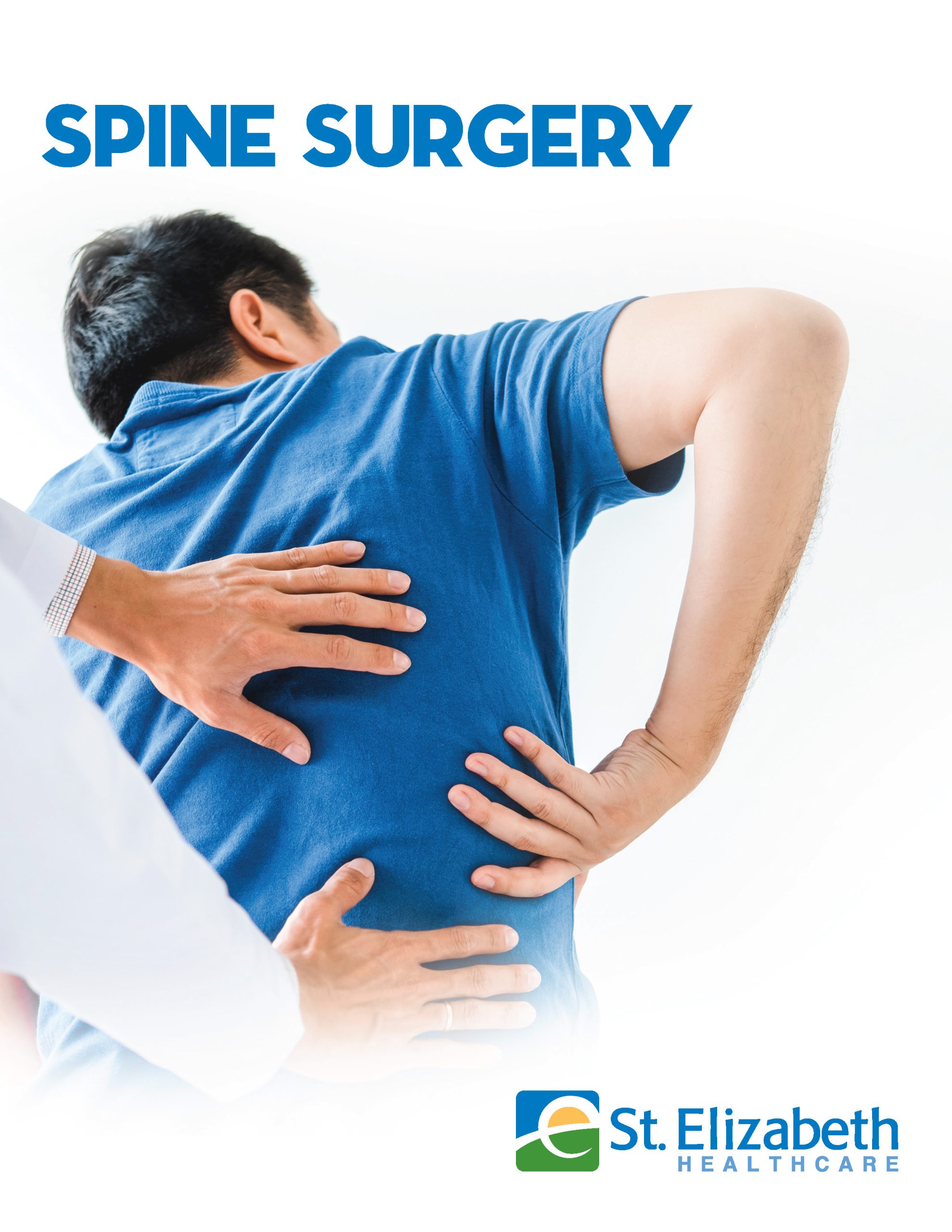Orthopaedic Surgery Patient Education
Thank you for choosing St. Elizabeth Healthcare for your orthopaedic needs. If you’ve chosen surgery to reduce your chronic pain, increase your mobility, and improve your quality of life, St. Elizabeth is committed to helping you reclaim your life.
Our team walks you through each step of the surgical process and helps you to make educated decisions regarding your care. The following links will help you know what to expect before, during, and after your surgical procedure.
Post-Operative
Frequently Asked Questions
Frequently Asked Questions
Your incision will be slightly red. This is a normal immune response. The entire length of the incision should have edges that are together and no open areas. If open areas appear or you experience increased/severe redness, heat, swelling or pain, call your surgeon immediately.
The amount of pain experienced following a total joint surgery varies from person to person. The surgery can be quite painful for some individuals and very tolerable for others. If you are experiencing a great deal of pain, the key to controlling it is to take your pain medication on a regular basis, using ice off and on all day, and elevating your leg above the level of your heart. This will assist in decreasing your swelling, which will decrease the amount of pain you are experiencing.
The arthritic pain you experienced before the surgery will now be gone. The pain you experience following surgery is surgical/muscle pain. While you can expect to feel this pain for several weeks after surgery, it will gradually decrease. The pain can be severe at times, so please remember to take you pain medication regularly when needed.
Most often you can call either your surgeon or the pharmacy for a refill. However, refills are not done every day of the week and are never done on the weekends. If you feel you may run out of medication on the weekend, please call the Wednesday or Thursday prior.
Yes, bruising is very common following joint replacement surgery. During the procedure, the surgeon is manipulating many different tissues inside your joint. This causes bruising in many cases. Simply monitor the bruising and report any bumps or knots that start to develop.
You should not take anti-inflammatories after surgery while you are on a blood thinner unless instructed by your surgeon. If you are needing these for pain, we recommend you use ice, elevation, and alternate pain medications such as Tylenol.
Following a total joint replacement, swelling (edema) can last for two to three months. The farther out from surgery you become, the less swelling you will have, however, it takes about an entire year for your joint to heal completely, so swelling can come and go until then.
Yes, most patients have at least mild constipation following a total joint surgery. Our recommendations are to take a mild laxative and a stool softener once daily until you are completely off your pain medication. If after several days this does not help and you are starting to experience discomfort, contact your primary care physician for further instructions.
You should be able to ascend and descend stairs when you arrive home following surgery. Our therapy team or nursing team will work with you prior to discharge to make sure you know the proper and safe way to navigate stairs. Patients are required to go up and down at least 3 steps safely before returning home.
Depending on the type of dressing you have, you should be able to shower the day after you are discharged from the hospital either with or without a waterproof dressing. If you are sent home with a Prevena™ negative-pressure dressing, you cannot shower until this dressing is removed. Reminder: NO baths until your incision is healed.
It is important to spend time both up and moving around as well as resting. For the first several days, be sure you are you are up and moving but not overdoing it. You should be going to the restroom, getting a drink, walking around your house for short periods about every hour or two. This will help with circulation and breathing as well as strengthening and stretching your joint. As time goes, you should be increasing your activity as tolerated. Begin doing simple chores, making small meals, etc. and progress from there. Listen to your body and make sure you are getting the rest you need while also moving as much as you are able.
Our knee replacement patients who are admitted for an overnight stay begin their physical therapy in the hospital and will continue upon discharge from the hospital. Most patients remain in therapy for 4-6 weeks, although it depends on how quickly you progress. If you are discharged the day of your surgery, you will begin outpatient therapy shortly after.
Our hip replacement patients do not usually attend formal physical therapy unless it is deemed necessary by your surgeon. Hip patients typically do home exercises and walk to rehab the hip.
You can sleep in just about any position that is in the most comfortable. Knee patients should not sleep with a pillow under the bend of their knee. This can cause complications. Positions that are acceptable include sleeping on your back with your legs elevated on 3-4 pillows or on your non-operative side with a pillow between your legs for cushioning. Sleeping can be a struggle for the first several weeks but will become easier and more comfortable.
Most patient can drive within a couple weeks following surgery. Please check with your surgeon at your first follow up visit about when it is safe. Remember, never drive if still taking prescription pain medication.
Your new knee will be very strong and secure following surgery. You should avoid quick, sharp movements, falls and large amounts of stress on the knee joint.
Most parts are made of metal. However, the smaller parts can be ceramic or metal. There will also be a plastic piece that will replace any cartilage in the joint.
For additional questions, you can call the Orthopedic Institute Total Joint Coordinator at (859) 301-0405 during business hours. You can also contact your surgeons office.
If you have issues where you believe you should be seen, there are different places you will want to visit depending on the seriousness of your condition.
For instance, if you want someone to look at your incision, or check your joint for swelling you should call your surgeon.
If you are having a true emergency such as chest pain, shortness of breath, bleeding that will not stop or a life-threatening allergic reaction, you should go to the nearest emergency room.
Contact Us
Surgical Options
If surgery is necessary, our physicians can provide a referral to one of our affiliated orthopaedic surgeons. For more information on surgical options, please contact us at askortho@stelizabeth.com.





